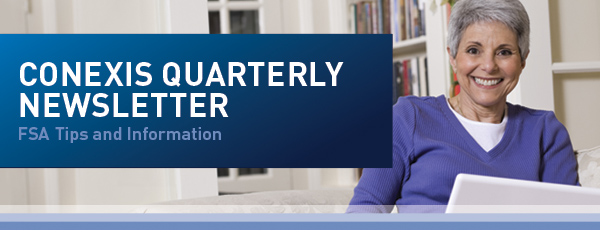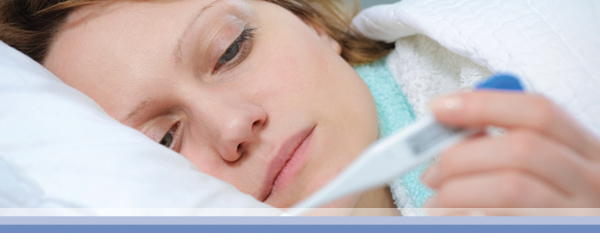
|
| Q1 2014 |
Date of Publication: January 16, 2014 |
| KNOWING THE INS AND OUTS OF YOUR FSA
|
|
| Being aware of your flexible spending account (FSA) plan features will help you make the most of your FSA dollars. Whether you’re a new FSA participant or an old pro, it’s important to review your FSA Summary Plan Description (SPD). |
| While the Internal Revenue Service (IRS) sets rules that govern FSAs, your employer decides which plan features to include, and everything is detailed in the SPD. Here are some FSA features that can vary or not be included at all. |
| Carryover Feature |
| You may have heard the news last fall when the Treasury Department and the IRS modified the use-it-or-lose-it rule. Now employers may allow their employees enrolled in a health FSA to carry over up to $500 of unused funds to the next plan year. Employers also have the option of setting the maximum carryover amount — it can’t be more than $500 per plan year, but it can be less. |
| Keep in mind that the carryover feature is quite new, and your health FSA may not include it at this time. Plus, the carryover feature doesn’t apply to dependent care FSAs. And if your plan has a grace period (see below), it can’t have a carryover. |
| Grace Period Extension |
| This plan feature is a set period of time after the plan year ends. During this time frame, you can use remaining FSA funds to reimburse eligible expenses you incur during the grace period. Employers can decide how long the grace period lasts (it can’t be longer than two months and 15 days), and if the grace period applies to the health FSA, dependent care FSA, or both. |
| Run-out Period |
| After the plan year ends, a run-out period gives you a set number of days to submit claims for eligible expenses incurred during the plan year — and if your plan has it, claims from the grace period as well. Your employer sets the length of the run-out period. Many plans have a 90-day run-out period. |
| Eligible Expenses |
| Your employer also determines which expenses are eligible under your FSA. Does your health FSA cover eligible health care expenses or just qualifying dental and vision expenses? Find out by reviewing the SPD. |
| If you’re not sure where to find the SPD for your FSA plan, ask your benefits representative. The SPD includes all the specifics. And once you know the specifics, you’ll be able to make the most of your FSA funds. |
|
|
|
| Effective January 1, 2014, you’ll receive 23.5 cents a mile if your employer’s health FSA plan includes reimbursement for travel to and from your doctor’s office, the dentist, pharmacies, and other places where you obtain eligible health care services. The IRS standard mileage rate for medical expenses decreased one-half cent from the 2013 rate of 24 cents. For more info, see our FSA Expenses webpage. |
|
|
|
| You can view your account activity in real-time any time from your online account. Simply log in and select the sorting options for the details you’d like to see. What’s more, you can print or export (download into a Microsoft Excel spreadsheet) any of these details to keep for your records. |
| Please note: The export feature is quite helpful when preparing your taxes. |
|

|
| SIX WAYS TO AVOID CATCHING THE FLU |
|
| Benjamin Franklin once said, "An ounce of prevention is worth a pound of cure." When it comes to the flu, this is especially good advice. |
| According to the Centers for Disease Control and Prevention (CDC), the single best way to prevent seasonal flu is to get a flu shot each year. But good health habits can also go a long way toward prevention. Here are six simple steps you can take in your daily life to help protect you from getting the flu:
|
| 1. |
Wash your hands often with soap and warm water for at least 20 seconds. If you can’t wash up, use alcohol-based hand gel or wipes that contain at least 60 percent alcohol, ethanol, or isopropanol. |
| 2. |
Routinely clean and disinfect frequently touched surfaces at home, work, or school, particularly when someone is ill. |
| 3. |
Resist touching your eyes, nose, or mouth if you can help it. Germs spread easily this way. |
| 4. |
Cover your nose and mouth with a tissue when you cough or sneeze. Then throw the tissue away when you’re through. |
| 5. |
Avoid close contact with those who are sick. If you’re sick, keep your distance from others. |
| 6. |
If possible, stay home and monitor your symptoms when ill. The CDC recommends staying home for at least 24 hours after your fever has gone, unless you need to visit your doctor. |
| This may help you feel a little better if you get sick: Your health FSA dollars can help pay for doctors' visits, prescriptions, and if prescribed, over-the-counter medicines. You can also use your funds toward a thermometer, a vaporizer, and many other health care-related items. Learn more… |
| Source: Centers for Disease Control and Prevention
|
|
|
|

|
| 877.CONEXIS | WWW.CONEXIS.COM
|
| This email was sent from an unmonitored email address. While we cannot receive replies at this email address, we're happy to help you with any questions or concerns you may have. Please log in to your account at mybenefits.conexis.com and visit the "Contact Us" page for more information.
|
| CONEXIS does not offer medical, legal, accounting, or other professional advice. If you need additional guidance, please contact your doctor, attorney, or tax advisor.
|
| CONEXIS uses reasonable efforts to ensure that the information provided in this document is accurate as of the date of publication.
|
| © 2014 CONEXIS Benefits Administrators, LP. All Rights Reserved. CONEXIS is a Word & Brown Company. No part of this publication may be reprinted without the written permission of CONEXIS.
|
| View our Email Privacy Policy
|
|


